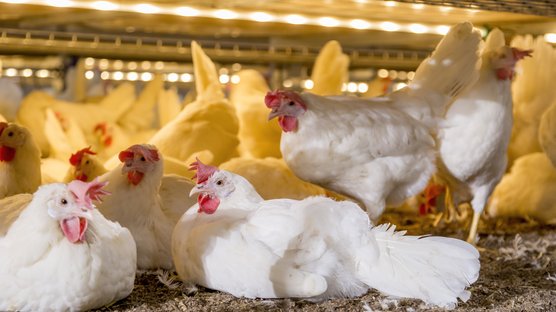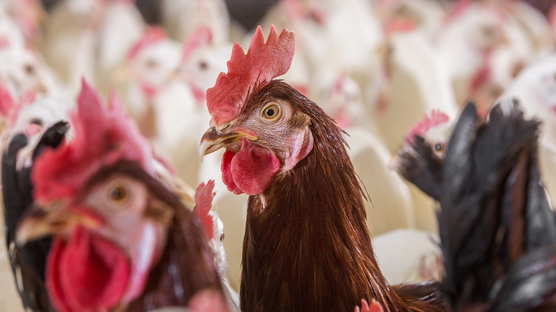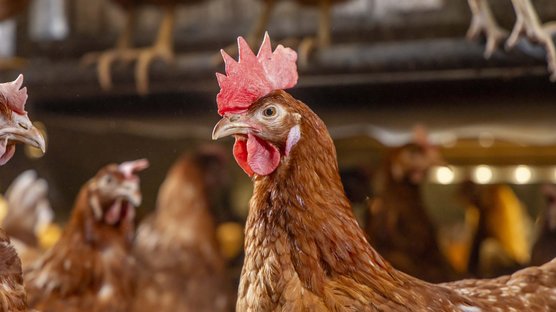
Published on Aug. 14, 2025
Feed Quality Control: Protecting the performance of our flocks
Feed costs typically represent 60 - 70% of the total production costs, and it is well known that feed quality can greatly impact flock performance.
By Diogo Ito, Nutritionist at Hendrix Genetics, BU Layers
Feed costs typically represent 60 - 70% of the total production costs, and it is well known that feed quality can greatly impact flock performance. When looking at the costs we do not only look at the actual costs that are involved with the formulation of the feed, but also the entire support structure in the process when making our own feed : feed mill, storage silos, transportation trucks, quality controls, etc. When making your own poultry feed, you can take more control on feed quality, but when it involves purchasing feed produced by external feed mills, we heavily depend on internal and external quality controls to ensure that the required standards are met correctly and consistently.
Laying hens (in rearing or in production, commercials or breeders) need well-balanced nutrition, as this will allow the birds to express their full genetic potential, and develop into high-quality pullets, that in their turn will be able to lay first quality eggs throughout their productive lifetime. As of changing in use of feedstuffs (like the use of corn for bio-ethanol), we see changes in poultry diets, as feed prices went up due to the increased competition.
As poultry operations have grown, the feed volumes have also increased and new technologies have been incorporated. This has reduced the visual contact that we have with the feed throughout the entire process. This must be taken into account when we talk about the importance of monitoring the quality of ingredients and feed.
Ensuring Feed Quality for Optimal Poultry Nutrition
Our goal is to address key factors to ensure the laying hens and pullets receive feed that meets the nutritional standards set by nutritionists.
Receiving Bulk Ingredients
Bulk ingredients are transported by truck and unloaded at feed mill receiving docks. Samples must be taken (either manually or using mechanical calipers) from various locations and depths of the load. This ensures a representative analysis, as particle segregation can occur during transportation.
Storing Bulk Ingredients
Monitor the flow of ingredients in silos. When emptying a silo, clear any ingredient buildup in the corners. Sampling these areas can help identify issues and enable corrective and preventive measures. Key concerns include moisture condensation, leaks, fungal contamination, and pest infestations.
Receiving and Storing Bagged Products
Bagged products should also be sampled from multiple points for quality checks. Proper storage is crucial to allow item segregation, easy stock movement, pest control, and inventory checks. Regular stock control (daily or weekly) can reveal issues with dosage, storage, or handling practices.
Understanding Raw Material Suppliers
Familiarize yourself with suppliers' structures and production processes to select reliable partners and establish effective quality monitoring. Be mindful of seasonal variations and weather impacts on ingredient quality. Take measures to minimize discrepancies between the negotiated, received, and used products.
Evaluating Ingredient Quality
Accurate knowledge of ingredient nutritional content is vital for proper feed formulation. Using incorrect nutritional matrices or failing to analyze ingredients can lead to under-nutrition and poor zootechnical and economic performance. Employ methods like bromatology or Near Infra-Red Spectroscopy (NIRS) to analyze ingredients. Additionally, perform visual checks for color, smell, and texture, and classify grains used in feed production. Always monitor for biological, physical, and chemical risks.
Feed Evaluation
Assessing feed quality is as important as ingredient analysis. Deviations in nutritional values may arise from sampling errors or feed production processes (storage, mixing, or distribution). Such evaluations help ensure the feed consumed by poultry meets the required standards.
Feed Particle Size
Uniform feed particle size is crucial for the proper development of the birds' digestive systems. Overly fine or coarse feed can lead to selective feeding and nutritional imbalances. Monitor mechanical feed processing factors like sieve size, hammer condition, rotation speed, and ingredient quality. Use a feed sieve to regularly check particle size.
Mixing Quality
Feed additives often have inclusion rates ranging from 5 kg to as low as 10 grams per ton of feed. Poor mixing can cause inconsistencies in expected outcomes. Properly prepare micro-ingredients before mixing and assess the mixer’s performance. Tools like microtracers can help monitor mixing quality.
Process Control and Sampling
Establish robust sampling and storage procedures for feed and raw materials. Traceability ensures that any issues in the field can be investigated effectively by analyzing and comparing retained samples.
Managing Input Quality Variations
Fluctuations in ingredient quality are inevitable. Address variations within acceptable limits and take corrective actions when minimum quality criteria are not met. Feed mill costs are fixed, and consistent animal performance is essential to cover these expenses.
Collaboration among feed mill operators, poultry teams, nutritionists, and raw material buyers is vital to maintaining livestock health and supporting business sustainability.



